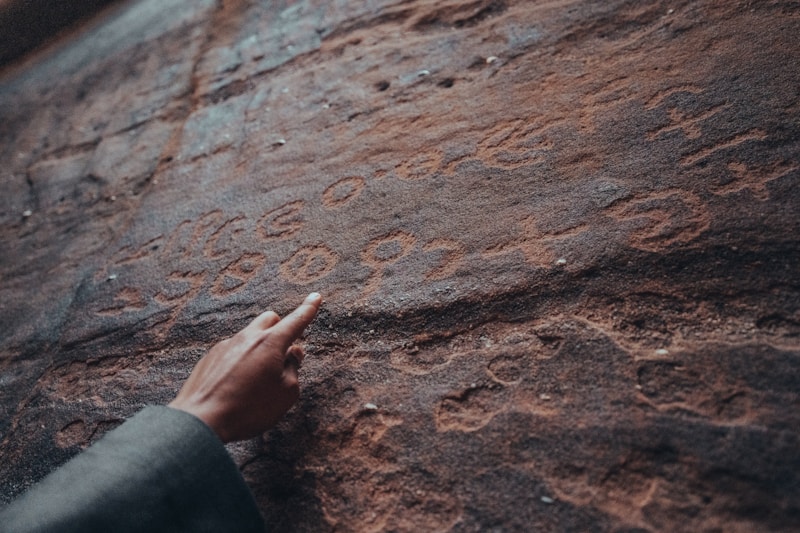9 Questions
What was the objective of the Fifth Crusade?
To conquer Egypt and reacquire Jerusalem and the Holy Land
Who led the Sixth Crusade?
Frederick II, the Holy Roman Emperor
What was the outcome of the Fourth Crusade?
The Crusaders attacked the Christian city of Zara and then Constantinople, resulting in the overthrow of Emperor Alexios III and the ascension of his nephew Alexios IV.
What was the objective of the Seventh Crusade?
To reclaim the Holy Land by attacking Egypt
What was the outcome of the First Crusade?
The conquest of Jerusalem in 1099 and the creation of the Kingdom of Jerusalem
Who led the Second Crusade?
Louis VII of France and Conrad III of Germany
What was the objective of the Barons' Crusade?
To regain control of Jerusalem and fortify Ascalon
What was the outcome of the Third Crusade?
The Treaty of Jaffa allowed Jerusalem to remain under Muslim control but allowed unarmed Christian pilgrims and traders to visit the city
What was the objective of the Fifth Crusade?
To conquer Egypt and reacquire Jerusalem and the Holy Land
Study Notes
Religious Wars of the High Middle Ages:
-
The Crusades were a series of religious wars initiated, supported, and sometimes directed by the Latin Church in the medieval period.
-
The best-known Crusades were those to the Holy Land in the period between 1095 and 1291 that were intended to conquer Jerusalem and its surrounding area from Muslim rule.
-
The Crusades began with the First Crusade, which resulted in the conquest of Jerusalem in 1099, followed by dozens of military campaigns.
-
Participants came from all over Europe and had a variety of motivations, including religious salvation, feudal obligations, opportunities for renown, and economic or political advantage.
-
Other church-sanctioned campaigns include crusades against Christians not obeying papal rulings, against the Ottoman Empire, and for political reasons.
-
The meaning of a "crusade" has been understood in diverse ways, particularly regarding the early Crusades, and the definition remains a matter of debate among contemporary historians.
-
The Crusades to the Holy Land are the best known of the religious wars associated with the term, beginning in 1095 and lasting some two centuries.
-
The Arab-Byzantine wars from 629 to the 1050s resulted in the conquest of the Levant and Egypt by the Muslim Rashidun Caliphate.
-
The political situation in the Middle East was changed by waves of Turkic migration in particular, the arrival of the Seljuk Turks in the 10th century.
-
The Crusaders marched to the former Byzantine city of Antioch, which had been in Muslim control since 1084.
-
On 7 June 1099, the Crusaders reached Jerusalem. Many Crusaders wept upon seeing the city they had journeyed so long to reach.
-
The First Crusade ended successfully and resulted in the creation of the Kingdom of Jerusalem, and the Crusades continued for several centuries.The Crusade of 1101 was a failure for the Crusaders who faced Kilij Arslan and his Seljuk forces and lost several battles. Baldwin I became king of Jerusalem in 1100, overseeing the consolidation of the kingdom and facing enemies to the north and south. The rise of Zengi in 1135 posed a threat to the Crusaders and he defeated Fulk at the Battle of Ba'rin. The fall of Edessa in 1144 led to the Second Crusade, the first to be led by European kings. The armies were led by Louis VII of France and Conrad III of Germany, and the German army was defeated by the Seljuks at the Second Battle of Dorylaeum. The French contingent met with some success but was ultimately unsuccessful in recapturing Edessa. The aftermath of the Crusade saw the Muslim world united around Saladin, leading to the fall of Jerusalem.Summary Title: The Crusades: The Rise and Fall of the Kingdom of Jerusalem
-
The Second Crusade was unsuccessful in retaking Edessa and resulted in the fall of Damascus to the Zengids.
-
Nūr-ad-Din's forces destroyed the Crusader army at the Battle of Inab, resulting in the fall of the County of Edessa.
-
Baldwin IV of Jerusalem's series of invasions of Egypt took advantage of the weakness of the Fatimids.
-
The fall of Jerusalem to Saladin led to the launch of the Third Crusade, led by Frederick Barbarossa and Richard I of England.
-
Frederick Barbarossa drowned before reaching the Holy Land and his army was led by the English and French forces.
-
Richard I of England led the Crusader force and achieved victories at the battles of Acre, Arsuf, and Jaffa, but failed to retake Jerusalem.
-
The Treaty of Jaffa ended the Third Crusade, allowing Jerusalem to remain under Muslim control but allowing unarmed Christian pilgrims and traders to visit the city.
-
The Crusade of 1197 captured the Levant coast between Tyre and Tripoli but ended after capturing Sidon and Beirut.
-
The Fourth Crusade was organised by three Frenchmen and contracted with the Republic of Venice for the transportation of 30,000 crusaders.
-
The Crusaders attacked the Christian city of Zara and then Constantinople, resulting in the overthrow of Emperor Alexios III and the ascension of his nephew Alexios IV.
-
Alexios IV was murdered in a violent anti-Latin revolt, leaving the Crusaders without an escape route.Overview of the Crusades from 1217 to 1254
-
The Sack of Constantinople occurred in 1204, in which Western Europeans attacked the city and pillaged churches, killing a large portion of the Greek Orthodox Christian population.
-
The Fifth Crusade (1217–1221) was an effort to conquer Egypt, ruled by the sultan al-Adil, brother of Saladin, in order to reacquire Jerusalem and the Holy Land. The Crusaders successfully assaulted the Burj al-Silsilah, a tower with massive chains that could stretch across the Nile, and began planning an attack on Damietta, which was eventually captured. However, the Crusaders were unable to gain any further ground and were defeated in the Battle of Mansurah.
-
The Sixth Crusade (1228–1229) was led by Frederick II, the Holy Roman Emperor, and was marked by little actual fighting. Diplomatic maneuvering resulted in the Kingdom of Jerusalem regaining some control over Jerusalem for fifteen years.
-
The Crusades of 1239–1241, also known as the Barons' Crusade, were a series of crusades to the Holy Land led separately by Theobald I of Navarre and Richard of Cornwall. Despite setbacks, the crusaders regained control of Jerusalem and fortified Ascalon, but the gains were reversed a few years later during the siege of Jerusalem.
-
The Seventh Crusade (1248–1254) was led by Louis IX of France, with the objective of reclaiming the Holy Land by attacking Egypt. Louis was successful in capturing Damietta, but was ultimately defeated and captured by the forces of as-Salih Ayyub.
Test your knowledge of the religious wars of the High Middle Ages with this quiz on the Crusades and their impact on the political and cultural landscape of Europe and the Middle East. From the First Crusade in 1095 to the Seventh Crusade in 1254, this quiz covers key events, battles, and figures in the history of the Crusades. Explore the motivations behind the Crusades, the conflicts between Muslim and Christian forces, and the rise and fall of the Kingdom of Jerusalem. Whether
Make Your Own Quizzes and Flashcards
Convert your notes into interactive study material.





